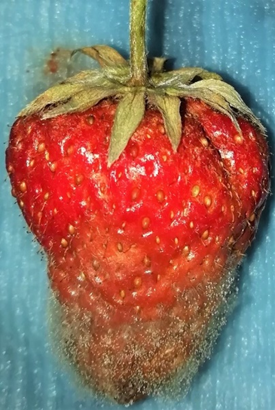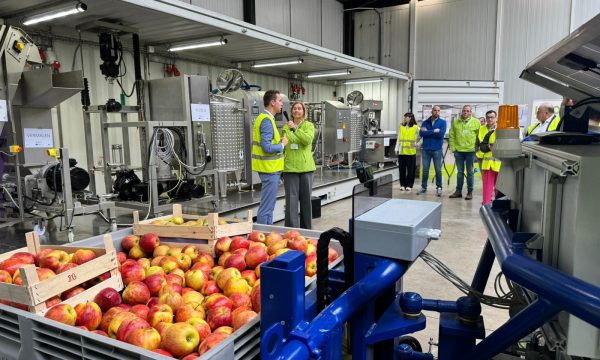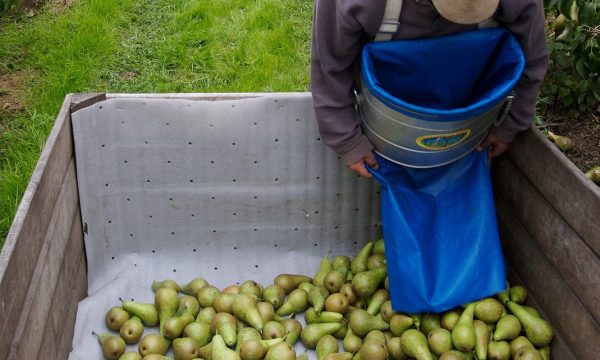Projectnieuws Plant attacker for June 2020: the fungus Botrytis cinerea
Sound familiar? You recently bought some tasty-looking strawberries in the shop and now they’re growing a gray fuzz (Photo 1), which makes them a lot less tasty-looking now. This gray fuzz is caused by Botrytis cinerea, a fungus that occurs worldwide. It can infect more than 100 different plants, including many fruits, flowers and leafy plants. Botrytis cinerea is one of the main causes of yield loss for strawberry growers.

The spores of Botrytis cinerea spread through the air. When humidity is high enough, they infect both the flowers (primary infections) and the fruits (secondary infections). The disease is controlled by practical measures such as: covering the soil with straw or plastic or growing them on racks to avoid the strawberries coming into contact with the moist substrate; removing affected plant parts as soon as possible and adjusting the planting density and fertilization. Chemical fungicides are also used. But these chemical treatments are under increasing pressure, on the one hand because of their impact on humans and the environment, but also because of the occurrence of resistance of Botrytis cinerea to these fungicides. People are finding more and more that commonly used fungicides no longer provide sufficient protection.
In the European Horti-BlueC project, ILVO and 8 partners from Belgium, the Netherlands, France and the United Kingdom are looking for strategies to grow strawberries in cultivation substrates made of sustainable building blocks that not only feed the plant, but also naturally strengthen it against Botrytis cinerea. Examples of these sustainable building blocks are: compost, plant fibers, biochar and chitin. These building blocks are produced from locally-available biomass that would otherwise be wasted. In addition, the extent to which commercially available biological products (e.g. based on the benign Trichoderma fungus) can thrive in these sustainable substrates is also being investigated as a possible way to further reduce the use of chemical fungicides.
More info:
- website: https://www.horti-bluec.eu/
- YouTube ILVOCOMM
- twitter: @HortiBlueC



